Sky Condition Exercises
Here are some exercises to help you practice your skills.
Practice Exercise 1
Review the images below and then answer the questions that follow.
Based on the image shown, at what height would you estimate the base of these clouds to be? Choose the best answer.
East View
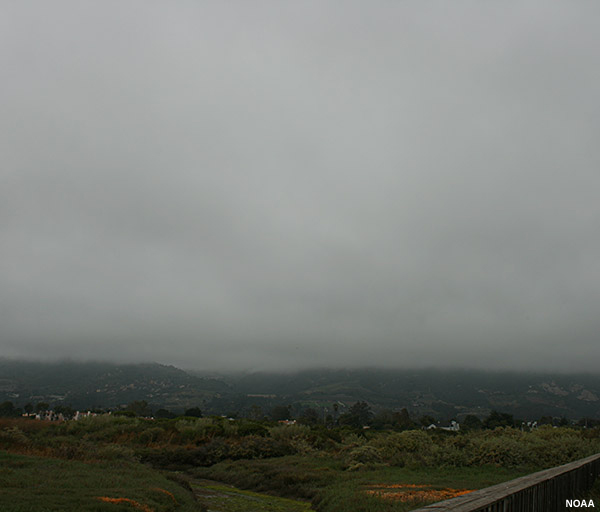
The correct answer is a).
These are stratus clouds, which usually have bases between 200 and 6,500 ft at mid-latitudes. In this image, the stratus deck is a short way up the slope of the hill and we report a layer height of 500 ft.
Looking at the image showing the 360° view of the sky, how would you report the total sky cover value (column 17 on your Observation Report). Choose the best answer.
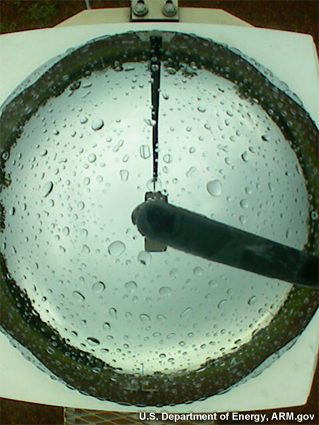
The 360-degree view of the sky is taken from a Total Sky Imager, a full color sky camera that automatically images the daytime celestial dome for algorithmic determinations of sky cover. In the image, you see the entire 360-degree view of the sky, extending from horizon to horizon in all compass directions. These are real-color images, where clear sky will show up as blue and clouds will typically appear as white or gray.
The correct answer is d), 8/8 sky cover.
There is one layer of stratus clouds present. Clouds cover 100% of the sky and rain is occurring. Be careful when determining total sky cover in these situations. In cases where there are very small openings in the cloud deck, the reported sky cover would be less than 8/8.
Based on the information above, how would you encode the sky cover observations? Choose the best answer.
The correct answer is d).
You observe stratus clouds at 500 ft and a total sky cover of 8/8. This sky condition is encoded as OVC005 in column 10.
Practice Exercise 2
Review the images in the tabs below and then answer the questions that follow.
Northeast View
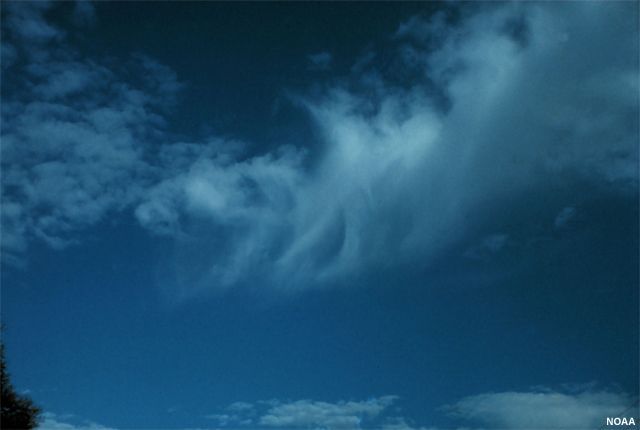
South View
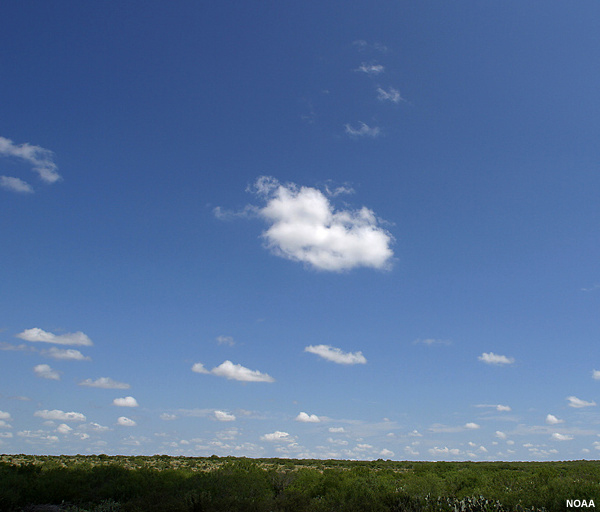
Based on the information above, at what height would you estimate the base of these clouds to be? Choose the best answer.
The correct answer is c).
There are two layers of clouds present, so we need to estimate the height for each layer. To the south, the lower layer has cumulus clouds which form around 6,000 ft. To the northeast, we see a layer of altocumulus clouds which form around 10,000 ft.
Looking at the 360° image, how would you report the total sky cover value (column 17 on your Observation Report). Choose the best answer.
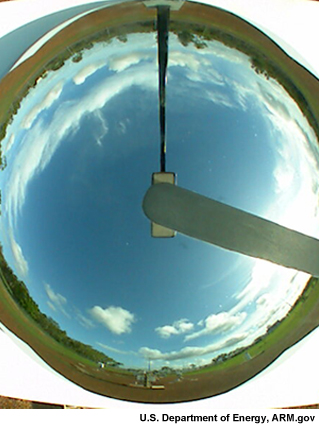
The correct answer is b), 2/8 sky cover.
We have two layers of cloud present so we need to add the sky cover for each layer. The cumulus layer covers about 1/8 of the sky and the altocumulus layer covers about 1/8. The layers add up to 2/8 sky cover.
Based on the information above, how would you encode the sky cover observations? Choose the best answer.
The correct answer is a).
In this situation, cumulus clouds are present at 6,000 ft and altocumulus is present at 10,000 ft. The total sky cover is 2/8. This sky condition would be encoded as FEW060 FEW100.
Here is bonus outtake reel for your enjoyment.